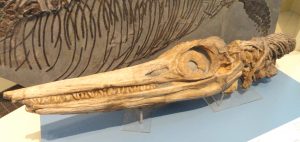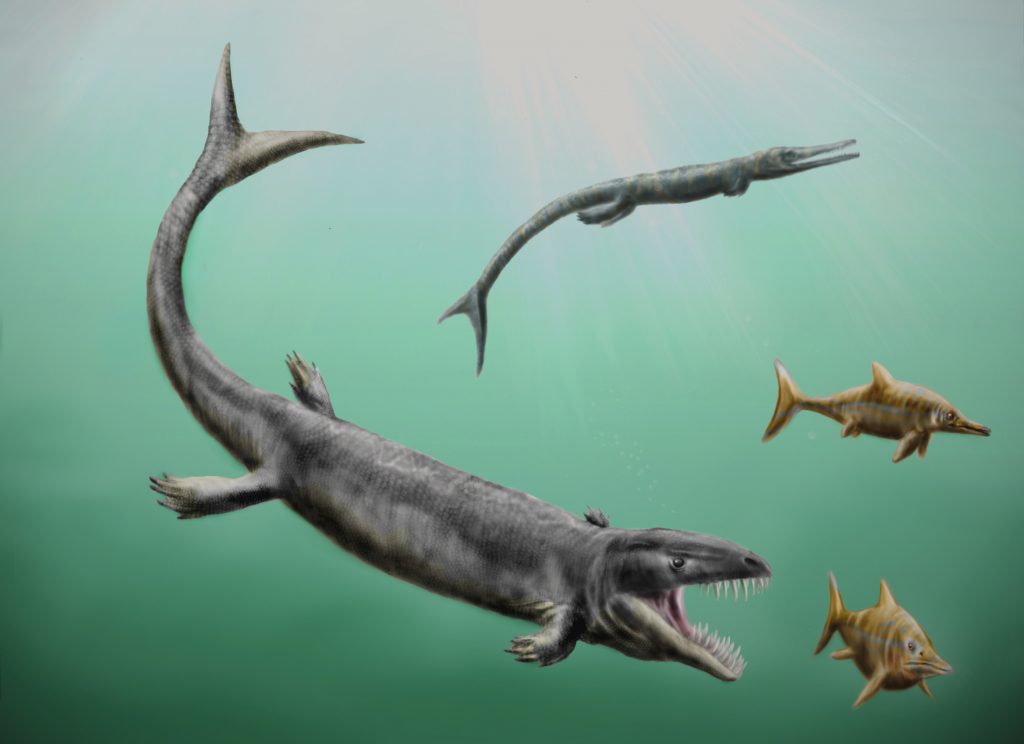 The Loch Ness Monster is a legend that dates back hundreds of years, depending on who you ask, but it grew in fame in 1934 when a man named Robert Kenneth Wilson supposedly photographed a creature in the lake. Since then, skeptics and believers alike have continued the debate over “Nessie’s” existence, but what does our past say about the legends of today?
The Loch Ness Monster is a legend that dates back hundreds of years, depending on who you ask, but it grew in fame in 1934 when a man named Robert Kenneth Wilson supposedly photographed a creature in the lake. Since then, skeptics and believers alike have continued the debate over “Nessie’s” existence, but what does our past say about the legends of today?
This is what scientists hope to uncover now that the fossilized skeleton of a dolphin-like animal has been revealed. Initially, the skeletal remains were discovered in 1966 on the Isle of Skye. Known as the Storr Lochs Monster, the creature is thought to be one of the fiercest reptiles of its day.
The fossil itself is the most complete skeleton of a sea-living reptile from the dinosaur age. The Storr Lochs Monster was evidently about four meters in length, and it had a long, pointed head. Its mouth was full of hundreds of cone-shaped teeth, according to researchers. It used to feed on squid and fish, and its remains have been preserved in National Museums Scotland’s storage facility for more than 50 years.
Now that scientists have an opportunity to take a closer look at the “real life monster,” they hope to form a better picture of the creature.
“Ichthyosaurs like the Storr Lochs Monster ruled the waves while dinosaurs thundered across the land,” Dr. Steve Brusatte told the University of Edinburgh. “Their bones are exceptionally rare in Scotland, which makes this specimen one of the crown jewels of Scottish fossils. It’s all thanks to the keen eye of an amateur collector that this remarkable fossil was ever found in the first place, which goes to show that you don’t need an advanced degree to make huge scientific discoveries.”
The fossil was initially discovered by SSE Storr Lochs Power Station facility manager Norrie Gillies. In a partnership between the University of Edinburgh, National Museums Scotland, and SSE, the fossil will be extracted from rock that had encased it for millions of years. The goal is to understand how ichthyosaurs evolved over the course of the Middle Jurassic Period.
And as for the original Loch Ness Monster? New photographs supposedly show two monsters in the lake, leading believers to assume the creature not only exists, but reproduces. Take it for what you will, but it certainly raises some eyebrows.
Sources
Houldey, Mark. “’Loch Ness monster’ photo shows Nessie may have had TWINS.” Metro. Published September 9, 2016.
“Mysterious Jurassic sea monster unveiled.” University of Edinburgh. Published September 5, 2016.
